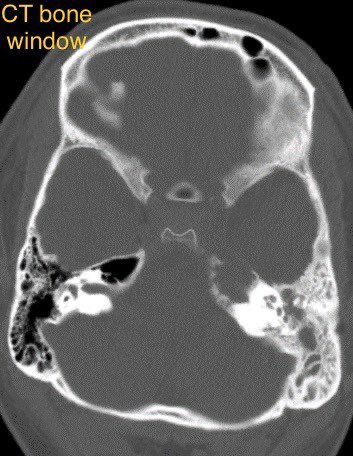
Neuroradiologist @UMiamiHealth l Former Neurorad fellow @PennRadiology l SGU ’18 l Educational Cases I Posts are my own #RadRes #Neurorad #RadEd
8 subscribers
How to get URL link on X (Twitter) App




 ⭐️ Answer: Spontaneous spinal epidural hematoma (no clear risk factor in this case)
⭐️ Answer: Spontaneous spinal epidural hematoma (no clear risk factor in this case)



 🔷For glioblastoma we need to rely on many clinical and imaging features to distinguish (no one feature is specific enough to diagnose so we need to take the whole clinical and radiographic picture into account)
🔷For glioblastoma we need to rely on many clinical and imaging features to distinguish (no one feature is specific enough to diagnose so we need to take the whole clinical and radiographic picture into account)




 ⭐️ Answer: petrous apicitis complicated by brainstem abscess
⭐️ Answer: petrous apicitis complicated by brainstem abscess



 ⭐️ Answer: Cortical vein thrombosis (CVT)
⭐️ Answer: Cortical vein thrombosis (CVT)



 ⭐️ Answer: Viral encephalitis (Specifically Rabies)
⭐️ Answer: Viral encephalitis (Specifically Rabies)

 ⭐️ Answer: Tumefactive demyelination (MS in this case)
⭐️ Answer: Tumefactive demyelination (MS in this case)
 ⭐️ Answer: Opioid-associated amnestic syndrome
⭐️ Answer: Opioid-associated amnestic syndrome


 🔷Comparison from ~4 months ago 👇
🔷Comparison from ~4 months ago 👇 





 🔷Ddx for venous causes of PT:
🔷Ddx for venous causes of PT:


 Answer: Linear Scleroderma aka Scleroderma en coup de sabre
Answer: Linear Scleroderma aka Scleroderma en coup de sabre



 Answer: Benign-appearing notochordal lesion (formally ecchordosis physaliphora, EP)
Answer: Benign-appearing notochordal lesion (formally ecchordosis physaliphora, EP)



 ⭐️ Answer: Transient Perivascular Inflammation of the Carotid Artery (Carotidynia or Fay syndrome)
⭐️ Answer: Transient Perivascular Inflammation of the Carotid Artery (Carotidynia or Fay syndrome)




 Additional image 👇
Additional image 👇 




 Answer: Glomus Tympanicum Paraganglioma
Answer: Glomus Tympanicum Paraganglioma



 Answer: Multiple System Atrophy Cerebellar Type (MSA-C)
Answer: Multiple System Atrophy Cerebellar Type (MSA-C)



 🔷First thing we notice is hemorrhage in the left basal ganglia
🔷First thing we notice is hemorrhage in the left basal ganglia


 Answer: Hypothalamic adhesion
Answer: Hypothalamic adhesion 
